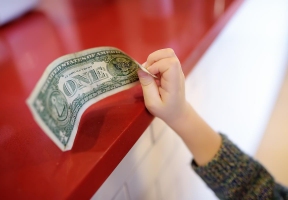

Numerous surveys show that many Americans live paycheck to paycheck, have little saved for retirement, and lack fundamental financial knowledge. Part of the problem, experts say, is that financial literacy has not been emphasized in American education; only 21 states require high school students to take a personal finance-related class. If parents want their children to learn the value of money and how to avoid financial problems as adults, the education has to start at home, says Steve Kruman, www.brycewealth.com, a financial planner and investment advisor at Bryce Wealth Management. Kruman offers the following at-home teaching methods to help children learn financial literacy:
● Gardening and investing. The parent purchases seeds and other starting materials at a garden supply store and has the children keep track of the spending by item on a notepad. “As you work together in the garden, keep a time log of each family member working,” Kruman says. “When it’s harvest time, teach them to count up the cost of production. Help them determine the value of their produce by comparing store prices of the same product, minus the cost of production. They will learn that you can start small as an investor, but putting in more effort along the way makes things grow.”
● Saving and staying out of debt. “A good lesson for your children to learn about debt would be to show them how a loan would work by you being the lender,” Kruman says. “Have them think of something that they would like to buy (such as a new bicycle or laptop) but that they don’t have enough money saved already. You could offer to help them make the purchase much earlier than continuing to save for it, but only in exchange for a loan payment that would be made by reducing their chore money. That way, they would learn how debt eats up their earning power. You have to instill in them that savings isn’t an option, but rather a necessity, so people don’t become slaves to debt.”
● Apple slices and taxes. “Chances are your kids have already heard you bemoaning taxes,” Kruman says. “Get one of those vertical apple slicers, and cut an apple up in sections to represent the approximate portion of your personal tax hit – federal, state, city/township, Social Security, etc. Put those slices next to the remaining part of the apple, and that difference will stick with them.”








